Very strong and shallow M7.3 earthquake hits southern Qinghai, China
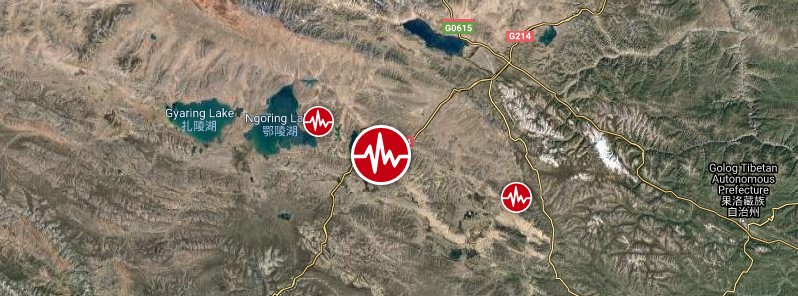
A very strong and shallow earthquake registered by the USGS as M7.3 hit southern Qinghai, China at 18:04 UTC on May 21, 2021 (02:04 LT, May 22). The agency is reporting a depth of 10 km (6.2 miles). EMSC is reporting M7.4 at the same depth.
The epicenter was located 389 km (242 miles) SW of Xining, Qinghai (population 767 531) and 532 km (331 miles) WSW of Lanzhou (population 2 628 426), Gansu, China.
There are about 37 000 people living within 100 km (62 miles).
6 000 people are estimated to have felt very strong shaking, 28 000 strong, and 369 000 moderate.
The USGS issued a Yellow alert for shaking-related fatalities. Some casualties are possible.
Orange alert for issued economic losses. Significant damage is likely and the disaster is potentially widespread. Estimated economic losses are less than 1% of GDP of China. Past events with this alert level have required a regional or national level response.
Overall, the population in this region resides in structures that are highly vulnerable to earthquake shaking, though some resistant structures exist. The predominant vulnerable building types are adobe block and log construction.
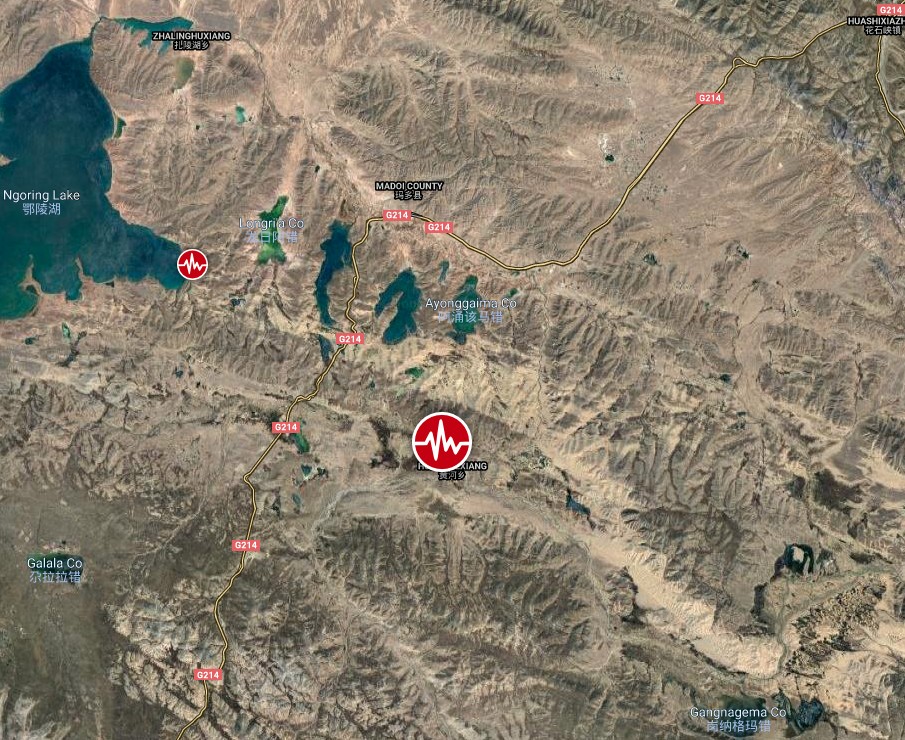
Image credit: TW/SAM, Google
This earthquake was preceded about 4.5 hours by an M6.1 Yunnan earthquake approximately 1 000 km (620 miles) southeast of the M7.3 epicenter, so the two earthquakes are too distant to be considered a foreshock-mainshock pair, the USGS said.
The distance between these two events, combined with the relatively small magnitude of the earlier M6.1, indicates that the two earthquakes are likely not directly related.
While commonly plotted as points on maps, earthquakes of this size are more appropriately described as slips over a larger fault area. Strike-slip faulting events of the size of the May 21 earthquake are typically about 90 x 15 km (56 x 9 miles) in size (length x width).
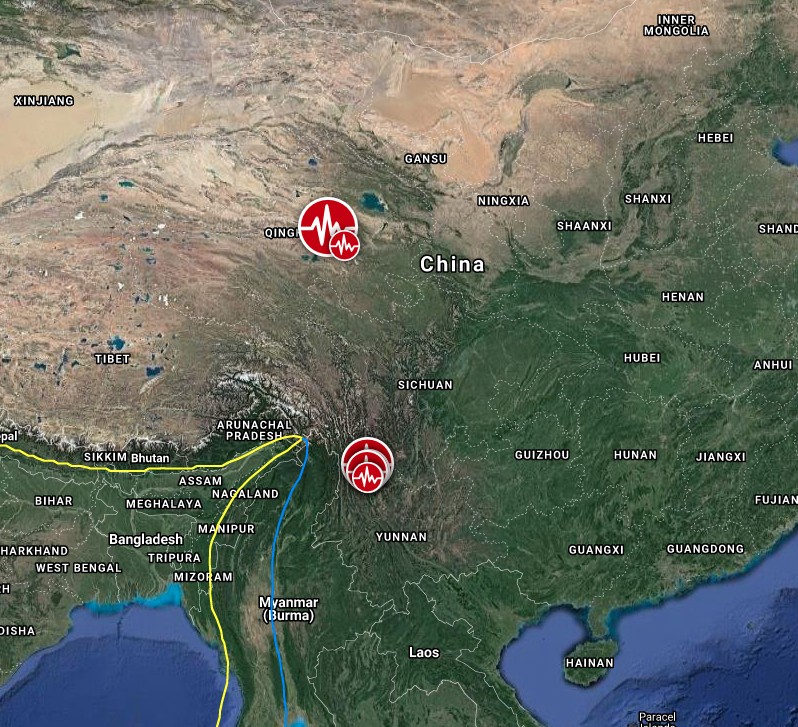
Image credit: TW/SAM, Google
Estimated population exposure to earthquake shaking
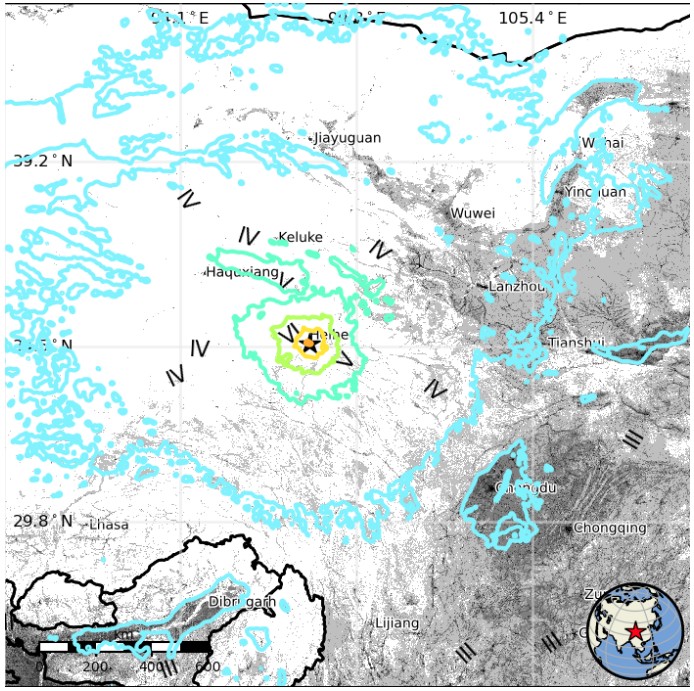
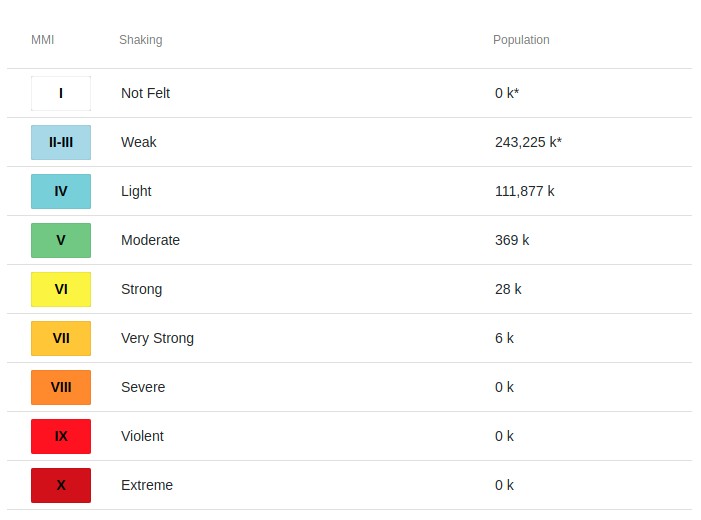
Selected cities exposed
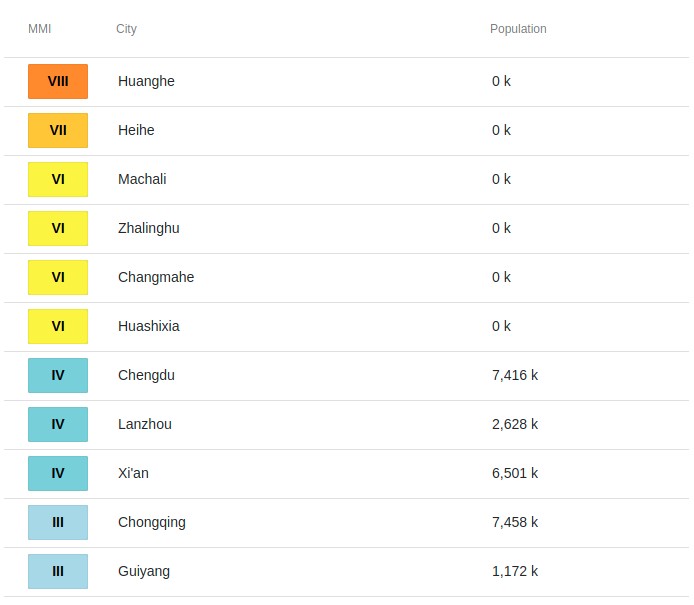
Regional seismicity
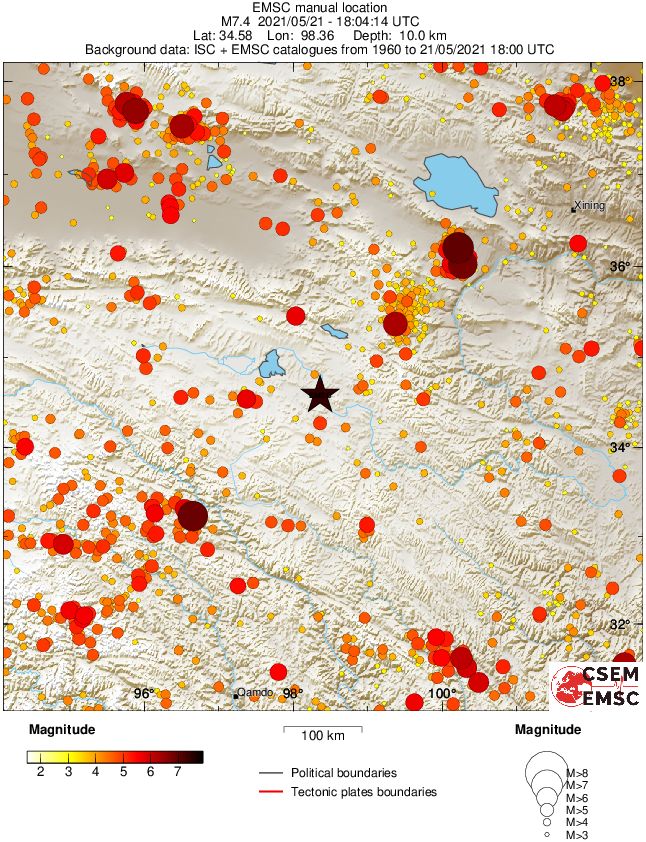
The M7.3 earthquake in central China occurred as the result of strike-slip faulting, with a component of normal faulting, in the eastern portion of the Tibetan Plateau where the Tibetan Plateau extends eastward. (USGS)
The Tibetan Plateau forms as a result of the northward collision of the India plate with the Eurasia plate and rests north of the Himalaya mountain range.
The Tibetan Plateau is the largest and highest plateau in the world, and as a result, it currently extends to the east and west as a response to gravitational forces. This extension is accommodated by a complex combination of fault motions that include left-lateral strike-slip motion along the Kunlun fault (located north of the M7.3 earthquake), normal faulting within the Tibetan Plateau, and reverse faulting as the Tibetan Plateau impinges onto more stable continental crust in central China.
In the past century, two earthquakes larger than M7 have occurred within 250 km (155 miles) of the M7.3 earthquake, including an M7.8 earthquake ~100 km (62 miles) NW of today's M7.3 that occurred on or near the Kunlun fault in January 1937. The May 2021 earthquake additionally occurred 223 km (138 miles) NE of the April 14, 2010 M6.9 Yushu, China earthquake that caused more than 2 000 fatalities.
Updates
So far there have been no reports of casualties and house collapses, with normal operation of power and communication networks, local officials said early Saturday, May 22.
However, highway sections and bridges have seen collapses in the quake-hit area, making vehicles impassable.
Well-equipped rescue forces have been dispatched to the quake zone, Xinhua reports.
Featured image credit: TW/SAM, Google

Commenting rules and guidelines
We value the thoughts and opinions of our readers and welcome healthy discussions on our website. In order to maintain a respectful and positive community, we ask that all commenters follow these rules.